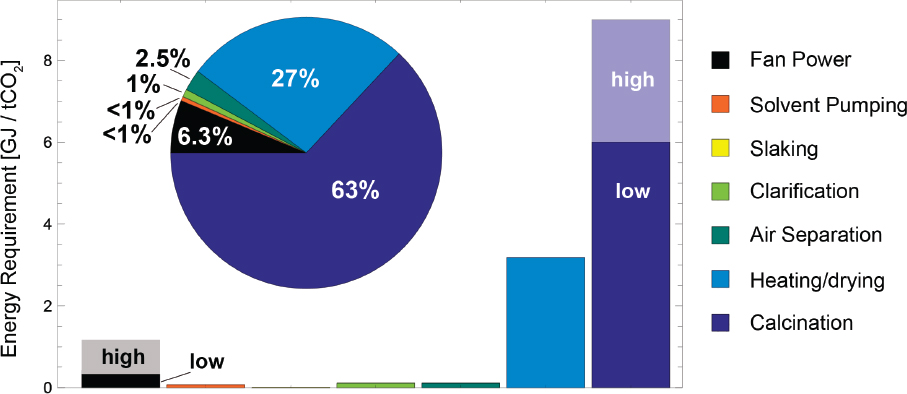This Is the No. 1 City in the World for Green Space—and It Has Tropical Weather, Tree-lined Corridors, and Giant Urban Parks – Travel + Leisure

Report on Medellín’s Urban Greening Initiatives and Alignment with Sustainable Development Goals
A recent global survey has highlighted Medellín, Colombia, for its exemplary urban green spaces. This report analyzes the city’s strategic initiatives, focusing on their direct contributions to the United Nations Sustainable Development Goals (SDGs).
1.0 Survey Findings and Public Perception
A survey conducted by Time Out, involving 18,500 global participants, identified Medellín as a leading city for green spaces and access to nature. Key findings include:
- 92% of local respondents in Medellín rated the city’s green spaces and nature access positively.
- This high level of satisfaction positions Medellín as a benchmark for urban livability and environmental integration.
2.0 The “Green Corridors” Project: A Strategic Response to Urban Challenges
Medellín’s success is not incidental but the result of targeted policy and investment. In 2016, the city launched the “green corridors” project to address significant urban environmental challenges, primarily the urban heat island effect caused by extensive concrete and asphalt infrastructure.
3.0 Project Outcomes and Contribution to Sustainable Development Goals (SDGs)
The “green corridors” initiative has yielded substantial environmental and social benefits, directly advancing several SDGs.
- SDG 11: Sustainable Cities and Communities
- The project directly addresses Target 11.7 to “provide universal access to safe, inclusive and accessible, green and public spaces.”
- By 2021, the initiative resulted in the planting of 2.5 million plants and 880,000 trees, transforming urban infrastructure into vibrant ecosystems.
- SDG 13: Climate Action
- The creation of extensive green infrastructure serves as a critical climate adaptation strategy, mitigating extreme urban heat.
- The increased foliage improves air quality and contributes to carbon sequestration, supporting climate mitigation efforts.
- SDG 15: Life on Land
- The project enhances urban biodiversity by creating habitats within the city, contributing to the restoration of terrestrial ecosystems in an urban context.
- SDG 3: Good Health and Well-being
- Improved air quality and the availability of recreational spaces like parks and walkways promote physical activity and mental well-being for residents and visitors.
4.0 Key Green Infrastructure Assets
Medellín now boasts a network of significant green spaces that are integrated into the urban fabric, providing accessible nature for all. Notable examples include:
- Parques del Río Medellín: A riverside park network offering over 71,800 square meters of public outdoor space.
- Parque Arví: An extensive ecological nature preserve.
- Natural Park Cerro El Volador: The largest natural park within the Medellín metropolitan area.
- City Botanical Gardens and Sculpture Park: Cultural and ecological hubs within the city.
5.0 Conclusion: An Integrated Model for Sustainable Urbanism
Medellín’s transformation demonstrates a successful model for integrating environmental sustainability with urban development. By prioritizing green infrastructure, the city has not only enhanced its livability and ecological health but has also strengthened its appeal as a destination for tourism and investment, thereby supporting SDG 8: Decent Work and Economic Growth. This strategic approach serves as a powerful case study for cities worldwide seeking to achieve the Sustainable Development Goals through nature-based solutions.
Analysis of Sustainable Development Goals in the Article
1. Which SDGs are addressed or connected to the issues highlighted in the article?
The article on Medellín’s green spaces primarily addresses three Sustainable Development Goals (SDGs):
- SDG 11: Sustainable Cities and Communities: The central theme of the article is urban planning and the quality of life in a city. It focuses on the development and accessibility of green public spaces within Medellín, which is a core component of making cities inclusive, safe, resilient, and sustainable.
- SDG 13: Climate Action: The article explicitly connects the creation of green spaces to climate change adaptation. It states that the “green corridors” project was initiated to combat the extreme heat felt in the city due to the “urban environment, concrete, and asphalt,” demonstrating a clear action to build resilience against climate-related hazards.
- SDG 15: Life on Land: The article highlights efforts to increase biodiversity and restore ecosystems within an urban setting. The large-scale planting of “2.5 million plants and 880,000 trees” and the mention of an “ecological preserve at Parque Arví” directly relate to protecting and restoring terrestrial ecosystems.
2. What specific targets under those SDGs can be identified based on the article’s content?
Based on the article’s discussion of Medellín’s initiatives, the following specific SDG targets can be identified:
-
SDG 11: Sustainable Cities and Communities
- Target 11.7: “By 2030, provide universal access to safe, inclusive and accessible, green and public spaces…” The article is centered on this target. It describes how Medellín has successfully created extensive green spaces, such as “Parques del Río Medellín” and the “green corridors,” and highlights a survey where “92 percent of locals in Medellín, Colombia, rated their green spaces and access to nature positively,” indicating successful provision and access.
-
SDG 13: Climate Action
- Target 13.1: “Strengthen resilience and adaptive capacity to climate-related hazards and natural disasters in all countries.” The article details how Medellín’s “green corridors” project was a direct response to a climate-related hazard—extreme urban heat. By planting trees and foliage to create shade and cool the city, Medellín strengthened its resilience and adaptive capacity.
-
SDG 15: Life on Land
- Target 15.9: “By 2020, integrate ecosystem and biodiversity values into national and local planning, development processes…” The “green corridors” project, which began in 2016, is a prime example of integrating ecosystem values (cooling, air quality improvement, biodiversity) into local urban planning and development. The city consciously chose a nature-based solution to solve an urban problem.
3. Are there any indicators mentioned or implied in the article that can be used to measure progress towards the identified targets?
Yes, the article provides several quantitative and qualitative indicators that can be used to measure progress:
-
Indicators for Target 11.7 (Access to green public spaces):
- Perception-based indicator: The survey result that “92 percent of locals in Medellín, Colombia, rated their green spaces and access to nature positively” serves as a powerful indicator of public satisfaction and perceived accessibility.
- Quantitative area indicator: The article specifies that “Parques del Río Medellín, a riverside network of parks, alone offers 71,800 square meters of outdoor space,” providing a concrete measurement of the land dedicated to public green space.
-
Indicators for Target 13.1 (Climate adaptation):
- Policy/Action indicator: The implementation of the “‘green corridors’ project” starting in 2016 is a direct indicator of a local climate adaptation strategy being put into action to combat extreme heat.
-
Indicators for Target 15.9 (Ecosystem integration):
- Ecosystem restoration indicator: The specific figures mentioned, “2.5 million plants and 880,000 trees were planted by 2021,” serve as a direct quantitative indicator of the scale of ecosystem integration and restoration efforts within the city’s development plan.
4. Summary Table of SDGs, Targets, and Indicators
| SDGs | Targets | Indicators Identified in the Article |
|---|---|---|
| SDG 11: Sustainable Cities and Communities | Target 11.7: Provide universal access to safe, inclusive and accessible, green and public spaces. |
|
| SDG 13: Climate Action | Target 13.1: Strengthen resilience and adaptive capacity to climate-related hazards. |
|
| SDG 15: Life on Land | Target 15.9: Integrate ecosystem and biodiversity values into local planning and development processes. |
|
Source: yahoo.com

What is Your Reaction?
 Like
0
Like
0
 Dislike
0
Dislike
0
 Love
0
Love
0
 Funny
0
Funny
0
 Angry
0
Angry
0
 Sad
0
Sad
0
 Wow
0
Wow
0















































































